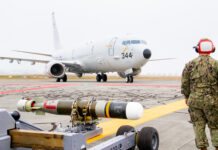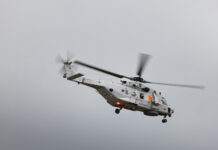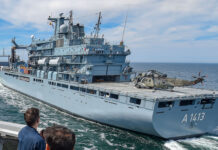Technological developments in the field of naval mine countermeasures (MCM) are revolutionising a traditionally dangerous, difficult and time-consuming process. Advances in areas such as networking, autonomy and wider aspects of artificial intelligence are speeding the detection, identification, classification and disposal of mines. Significantly, they also offer the prospect of ‘taking the ship out of the minefield’. One common question posed to fleets worldwide is how best to deploy this new technology. This article examines how leading navies are implementing different solutions to meet this requirement.
A mine countermeasures revolution
The development of effective countermeasures to the naval mine has proved to be a major problem since the weapon’s first significant strategic use during the American Civil War. A prime example of an asymmetric weapon, the naval mine is able to deter access to vast areas of water and cause a potential hazard to warships and commercial vessels alike out of all proportion to its modest cost. By contrast, detection and disposal of naval mines has typically been dangerous and expensive. Much effort has been expended in attempting to address this disparity between threat and antidote, but success has been mixed.

Credit: Crown Copyright 2017
Recent technological developments hold out the hope of going some way to reduce the naval mine’s undoubted advantage. Of these, it is progress in the field of autonomy that have been most influential. Robotic systems are not new to mine countermeasures. For example, the French PAP (poisson auto-propulsé) remotely controlled minehunting vehicle was developed in the late 1960s. Similarly, the German ‘Troika’ minesweeping system has been in service for many decades. However, momentum in the area of artificial intelligence has, particularly, allowed the production of a wide range of truly autonomous uncrewed surface vessels (USVs) and uncrewed underwater vehicles (UUVs) for mine countermeasures duties. Moreover, these can be networked together to conduct minehunting and mine disposal missions much more swiftly and efficiently than was previously the case. When coupled with improvements in the performance of detection and classification systems, such as the increasingly common use of synthetic aperture sonar, the need for a minehunting vessel to enter a minefield to perform its mission is seemingly much reduced.
These technological advances – which can often be configured as a so-called ‘toolbox’ of readily-transportable, modular systems – have given rise to questions as to the most effective means of undertaking their deployment. In essence, it is now possible to separate mine countermeasures equipment from a specific platform in nearly all circumstances. This potentially dispenses with the need for specialised mine countermeasures vessels (MCMVs) altogether. For example, defensive, coastal mine countermeasures operations can be readily conducted from a land-based control centre using systems deployed from the shore or by ‘craft of opportunity’. Equally, the mine clearance requirements of an amphibious assault could be met by the embarkation of equipment and operators on an expeditionary vessel. This is, for example, one of the key missions envisaged for the US Navy’s Expeditionary Mine Countermeasures Companies. However, there is a general acceptance that the requirements of more demanding and/or enduring missions will still require a seagoing platform from which the toolbox can be deployed. This is particularly the case when the operation is at distance from friendly coasts.
The traditionalist approach
Of necessity, a common interim solution to meet this requirement has been to refit existing MCMVs to carry the new generation of autonomous systems. This evolutionary approach has the advantage of facilitating the maintenance of residual ‘legacy’ capabilities as next generation technologies are implemented, not least the ability to deploy safely within mined waters. Many fleets are extending the lives of their MCMV flotillas in this way. Other navies are acquiring second-hand units to upgrade and operate in similar fashion. Some, arguably more-conservative navies also remain wedded to the concept of acquiring traditional MCMVs that can both deploy autonomous vehicles yet continue to enter the minefield if required. One example is the Indonesian Navy’s acquisition of two MHV60-derived MCMVs from Germany’s Abeking & Ramussen under a contract signed in January 2019. These Pulau Fani class vessels have hulls constructed out of non-magnetic steel but will – amongst other equipment – each carry two optionally-manned small waterplane area twin hull (SWATH) craft for deployment at distance. The two new MCMVs were commissioned at Surabaya in August 2023.
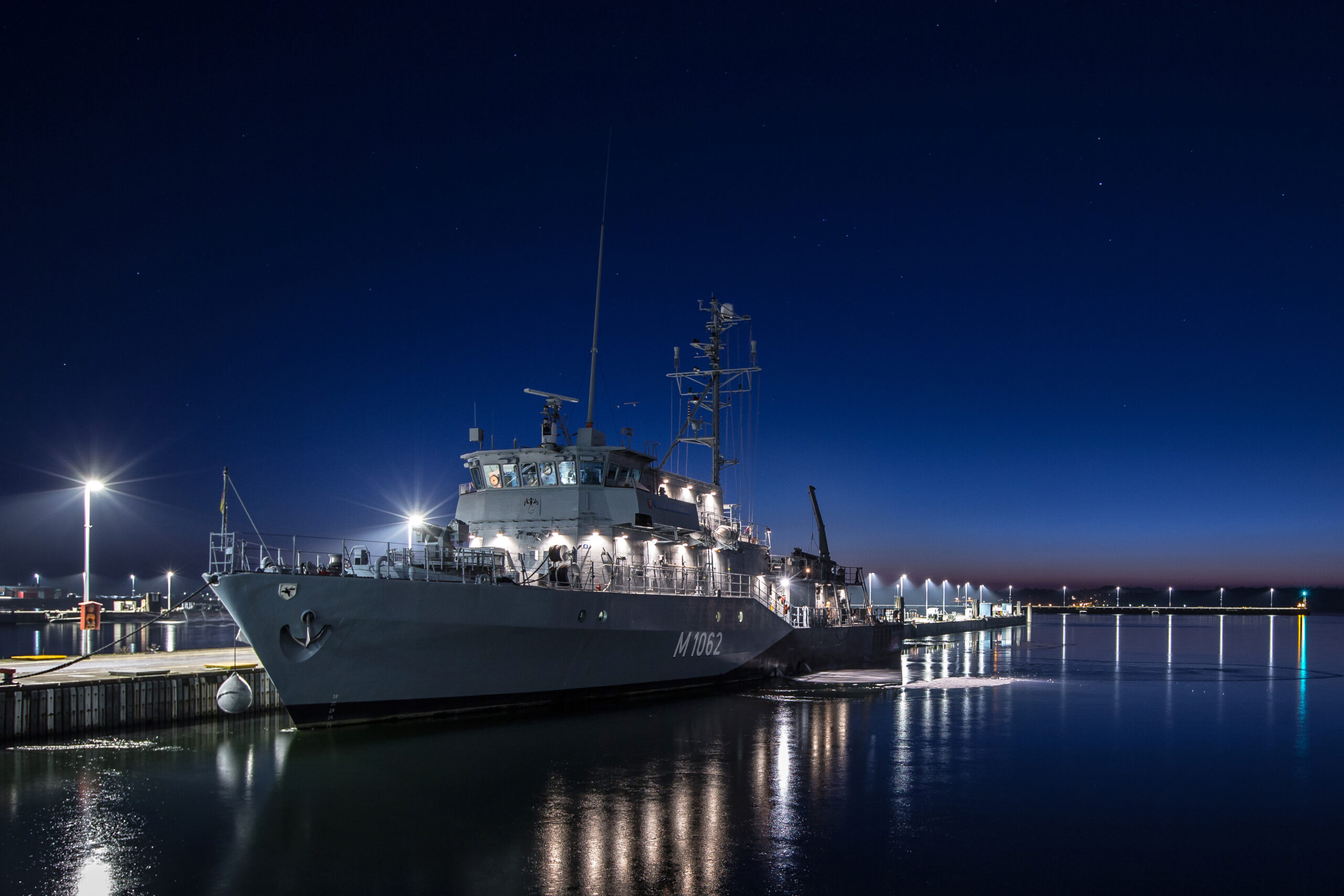
Credit: Bundeswehr
One significant problem with this approach is the relatively small size of many traditional MCMV designs. In effect, this means that there is only so much equipment from the toolbox that they are able to transport. This problem is arguably reflected in the Italian Navy’s plan to reconstitute its aging MCMV force. This will incorporate composite fibreglass-hulled vessels in line with a hybrid ‘unmanned when possible, manned when you have to’ philosophy. The 12-ship programme initially envisages construction of 60 m coastal MCMVs of traditional size that will be evolved from existing designs. However, these ships will then be followed by orders for larger, 80 m ‘d’altura’ oceanic vessels of entirely new configuration that will be capable of carrying a much greater complement of autonomous systems and other equipment. An order for the detailed design and construction of the initial batch of coastal vessels is expected to be placed with Intermarine before the end of 2024. However, contracts for the oceanic vessels are likely some distance into the future.
In spite of its apparent attractions, the idea of acquiring larger MCMVs of non-magnetic construction is not without its drawbacks. Building such large vessels from specialised materials is an extremely costly proposition, as recently demonstrated by the derailment of the German Navy’s MCMV replacement programme. Initiated in 2014, this envisaged the procurement of 11 vessels that would be capable of global deployment in contested waters. They would both act as a base for autonomous vehicles whilst also being able to operate safely within mined waters. It was initially envisaged that the total sum expected for this project would amount to EUR 2.8 Bn, a figure that was to prove a significant underestimate. According to a German Federal Audit Office report published in December 2023, expected programme costs had increased to as much as EUR 6 Bn by 2018, resulting in efforts to restructure the project. After rejecting a plan to operate a mixed flotilla of new-build and refurbished vessels, it has ultimately been decided to abandon new construction and modernise the existing flotilla. As noted in the Audit Office report, this will ultimately result in the operation of near 50 year-old vessels that are not entirely able to meet the anticipated mine countermeasures requirement.
The bespoke mothership
Possibly influenced by such cost constraints, an increasingly popular alternative approach is to procure bespoke ‘motherships’. These vessels are optimised for the deployment of a wide range of autonomous vehicles but are not intended to enter mined waters. The intention is that such vessels’ specialist design will enable them to operate the new generation of ‘stand-off’ systems to maximum effect whilst avoiding the high costs associated with more traditional MCMVs. Clearly, adoption of this approach is predicated on a belief that these new technologies will fully meet the performance expected of them.
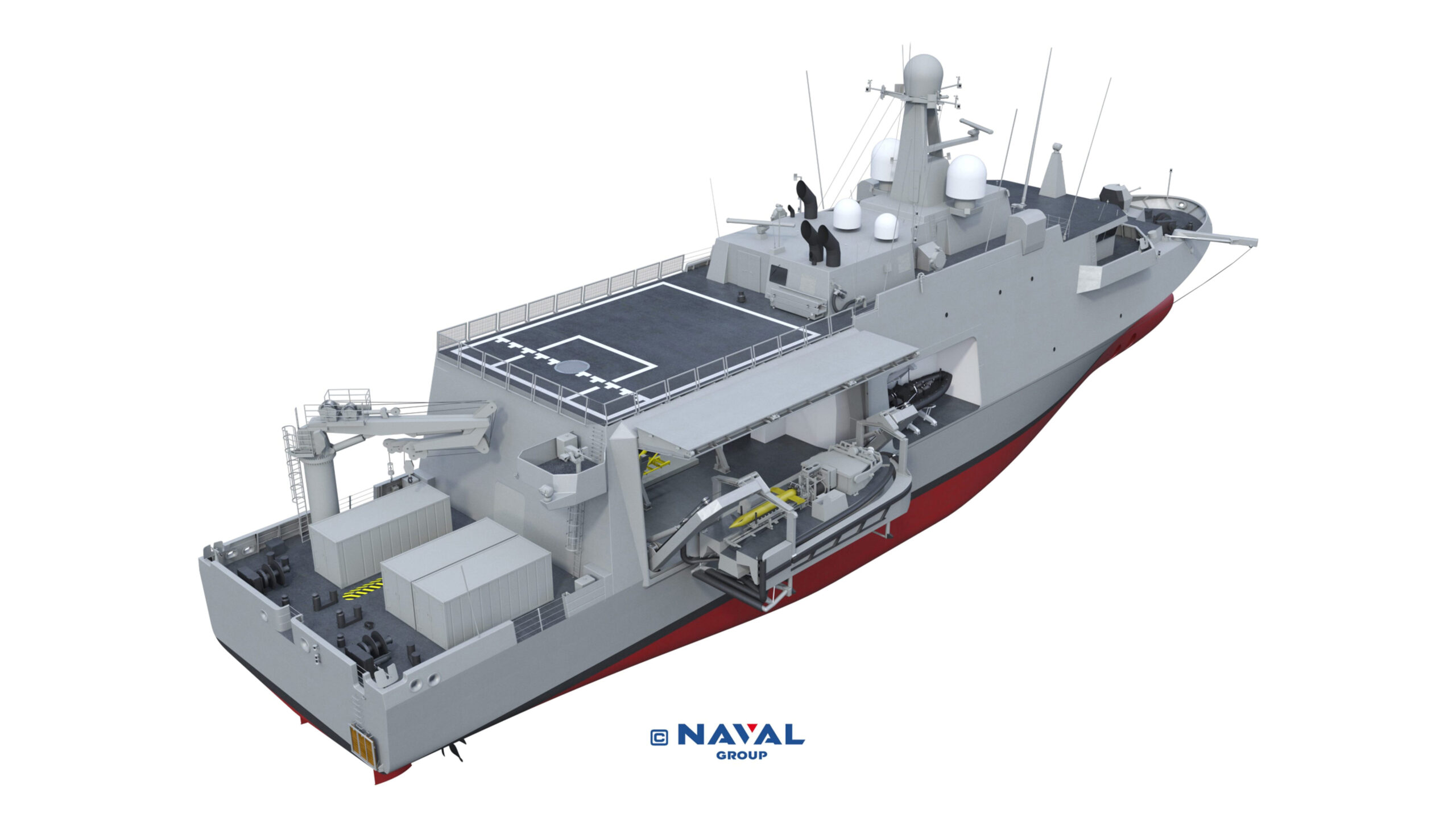
Credit: Naval Group
At the time of writing, the most prominent example of the mothership philosophy is the Belgo-Dutch replacement mine countermeasures (rMCM) project. rMCM forms part of a broader programme of collaboration between the Belgian Naval Component and the Royal Netherlands Navy. It involves the procurement of twelve motherships – six for each navy – and an associated toolbox of autonomous systems and associated equipment. Delivery of the project has been entrusted to Belgium Naval & Robotics, a consortium comprising French companies Naval Group and Exail (formerly ECA Group), under a EUR 1.9 Bn contract awarded in May 2019. Construction of the motherships has been sub-contracted to Kership, the joint venture between Naval Group and Piriou, at shipyards in Brittany. The lead motherships for each navy had both been launched by the end of 2023 and Belgium’s BNS Oostende is scheduled for delivery before the end of 2024. Meanwhile, production of the toolbox to be embarked aboard the motherships has largely been entrusted to Exail. The group opened a new, purpose-built factory at Ostend in Belgium in June 2022 to produce drones for rMCM and other customers.
Displacing over 2,800 tonnes and nearly 83 m in length, the rMCM motherships are equipped with a large mission bay amidships to house the principal autonomous systems. These are focused on two Exail ‘Inspector 125’ USVs. These craft, in turn, can deploy Exail A-18M UUVs, towed sonar and a minesweeping module, as well as identification and disposal robots. The USVs are deployed by means of two Naval Group-developed launch and recovery systems that have proved capable of recovering the ‘Inspector 125’in conditions up to Sea State 5/6. Other important aspects of the mothership design include a flight deck and hangar to operate UMS Skeldar unmanned aerial vehicles (UAVs) and command and control facilities. There is sufficient accommodation both to house the core crew and the modular systems’ operators.
In August 2023, France signed a memorandum of understanding with Belgium and the Netherlands that is expected to result in the use of the rMCM mothership design as the basis for its own bâtiment de guerre des mines (BDGM) project. It should be noted, however, that the French Navy has turned to Thales to develop its own toolbox of mine countermeasures systems as part of the Anglo-French maritime mine countermeasures (MMCM/SLAM-F) programme. One complication is that the Thales-developed drones have different dimensions from those being produced by Exail. This will therefore doubtless require modifications to the mission bay and associated handling equipment of their own motherships to ensure these systems’ efficient deployment.
Multi-role vessels
A modification of the mothership proposition is represented by the original operating concept for the US Navy’s littoral combat ships. In its original guise, this envisaged both the mono-hull Freedom (LCS-1) and catamaran Independence (LCS-2) littoral combat ship variants serving as ‘Swiss Army Knives’ that were capable of quickly switching between one or other of multiple roles. The concept was to be achieved by a modular design configuration under which a basic littoral combat ship ‘seaframe’ could be rapidly reconfigured by the embarkation of various mission modules and their supporting operators. Three modules – focused on anti-submarine warfare, surface warfare and mine countermeasures – were to be developed in support of this objective. Contemporary documents suggest that it was hoped that only as little as 24 hours would be required to swap different modules in and out.

Credit: US Navy
In the event, it seems that the ‘Swiss Army Knife’ operating concept has proved to be something of a dead end in US Navy thinking. Whilst the littoral combat ship programme’s well-reported difficulties do not need to be detailed here, in essence a combination of technical problems with ships and modules alike combined with a changed strategic environment put paid to the original plans. Instead, a reduced fleet of littoral combat ships will be permanently configured to perform either surface warfare or mine warfare missions. Up to 15 of the Independence class ships will be allocated to deploying the US Navy Mine Countermeasures Mission Package that was developed to support the original operating concept. The package finally achieved initial operational capability (IOC) in May 2023 after previous delays.
In this revised guise, the mine countermeasures-configured littoral combat ships will operate in largely similar fashion to the motherships being acquired by other fleets. Key components of the new Mine Countermeasures Mission Package include an unmanned influence sweep system and Raytheon’s AN/AQS-20C mine-hunting sonar. Both will be deployed from a pair of autonomous mine countermeasures mission USVs. However, a notable difference in the US Navy’s concept of operations is reflected in the importance given to aerial systems. As such, other important elements of the package comprise the well-established AN/AES-1 Airborne Laser Mine Detection System (ALMDS) and the AN/ASQ-235 Airborne Mine Neutralization System (AMNS), which are both operated from an embarked MH-60 series helicopter. The airborne AN/DVS-1 Coastal Battlefield Reconnaissance and Analysis (COBRA) system, which can be carried by the MQ-8C Fire Scout UAV, and future Knifefish UUV form additional elements of the package. It is currently anticipated that mine countermeasures-equipped Independence class vessels will commence operational service in the Middle East during 2025.

Credit: US Navy
The problematic experience of the littoral combat ship programme suggests that the concept of performing sustained mine countermeasures operations from a multi-role vessel is unlikely to gain widespread traction. In addition to technical considerations, it would seem that the difficulties of maintaining acceptable levels of operator skills for complex mine warfare missions in a frequently reconfigured warship form a material drawback inherent in this approach. At the same time, the use of dedicated mission bays and other modular systems on increasing numbers of surface escorts around the world is an important development. This will facilitate the general ambition of being able to deploy mine countermeasures systems from a much wider range of platforms as the need arises, albeit without the same level of capacity as a dedicated mine warfare platform.
Off-the-shelf solutions
Instead of constructing a purpose-built mothership, another alternative is to adapt existing commercial vessels to deploy the new mine countermeasures toolboxes. The availability of a large pool of offshore supply vessels built to service the subsea energy sector means that this is a practical and potentially cost-effective way forward. The British Royal Navy is a leading proponent of this approach, purchasing the former support vessel Island Crown for Royal Fleet Auxiliary (RFA) service in early 2023. Reportedly acquired at a price of GBP 40 M (EUR 47 M), the renamed RFA Stirling Castle is certainly a much cheaper vessel than the bespoke motherships being acquired by Belgium and the Netherlands.
Once fully in service, RFA Stirling Castle will be used to trial the most effective means of supporting the Royal Navy’s next generation of autonomous mine warfare systems. In addition to the new equipment being developed by Thales under MMCM/SLAM-F, this matériel includes Atlas Elektronik’s ARCIMS (Atlas Remote Combined Influence Minesweeping System) modular USV system. As its acronym suggests, this was initially acquired to carry out autonomous minesweeping missions but it is capable of performing other roles. The host vessel has a long working deck on which USVs and containers can be stowed, with system deployment performed by means of a 10 tonne capacity crane. An extensive series of initial handling trials were carried out off Portland on England’s south coast in the summer of 2023. Open source reports suggest that as many as four additional offshore supply vessels may be acquired to support mine countermeasures missions if the full programme of trials is successful. The RFA have also acquired another support ship, re-named RFA Proteus, to act as a platform for ocean surveillance operations using UUVs.

Credit: Crown Copyright 2023
The conversion of commercial shipping for the mothership role inevitably has both benefits and drawbacks. Negatively, vessels such as RFA Stirling Castle lack many of the more sophisticated features incorporated in bespoke vessels. Not least of these are their specialised handling systems and dedicated command and control spaces. Indeed, many argue that the Royal Navy’s decisions have been largely driven by cost considerations, being based on difficulties affording more expensive purpose-built designs. The counter argument points to the flexibility inherent in the typically larger hulls of ships such as RFA Stirling Castle. This allows more ready adaptation to the embarkation and deployment of new autonomous systems and other equipment in a technological field that is still experiencing rapid evolution. Certainly, there have to be questions with respect to the Belgo-Dutch decision to embrace a turnkey contract awarding the supply of both ships and equipment to a single supplier given the increasingly wide range of solutions available to support mine countermeasures operations.
The way ahead
The continued rapid evolution of mine warfare technology referenced above makes it quite difficult to establish the most likely way forward for the future of mine countermeasures platforms. At the moment, there is still considerable scepticism in parts of the mine warfare community as to the true effectiveness of new generation systems, including autonomous vehicles. Given this backdrop, the desire to retain the ability to deploy within the minefield exhibited by some navies is understandable. More cynically, it is also conceivable that a desire to maximise the benefits of national leadership in industrial fields such as the construction of non-magnetic steel or composite hulls is also playing a part in supporting a conservative stance. Whatever the reason, the experience of the German Navy and others in seeking to retain an ability to operate within minefields suggests that this conservatism can come at a high financial price.
Much, therefore, will depend on the actual performance of the new toolboxes of mine countermeasures equipment as they transition from the developmental to the operational stage. These new systems have certainly demonstrated considerable promise in trial conditions but their deployment in ‘real world’ conditions has been relatively limited to date. As such, it seems that more time and experience will be required before the bespoke mothership’s replacement of the traditionally-hulled MCMV is assured.
Conrad Waters is Editor of Seaforth World Naval Review, Joint Editor of Maritime Defence Monitor and a regular contributor to other Mittler Report publications.








